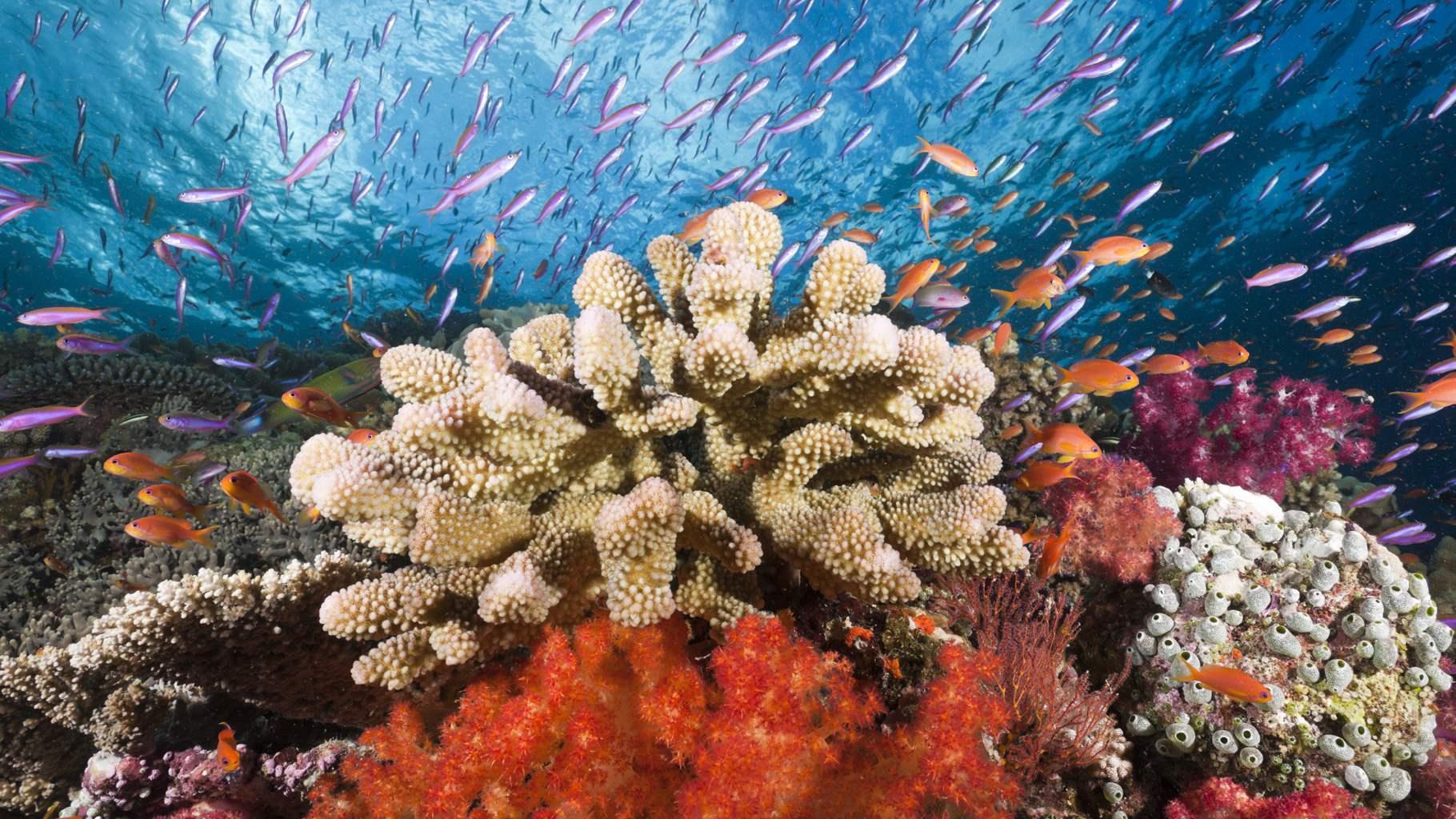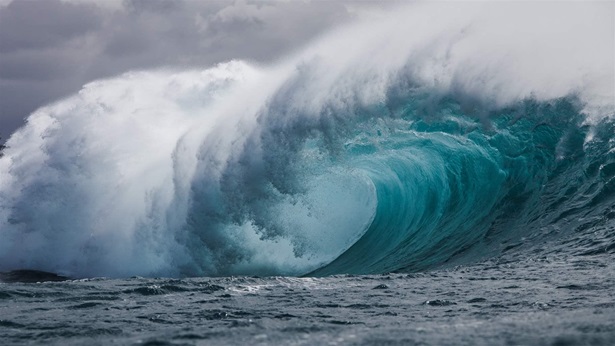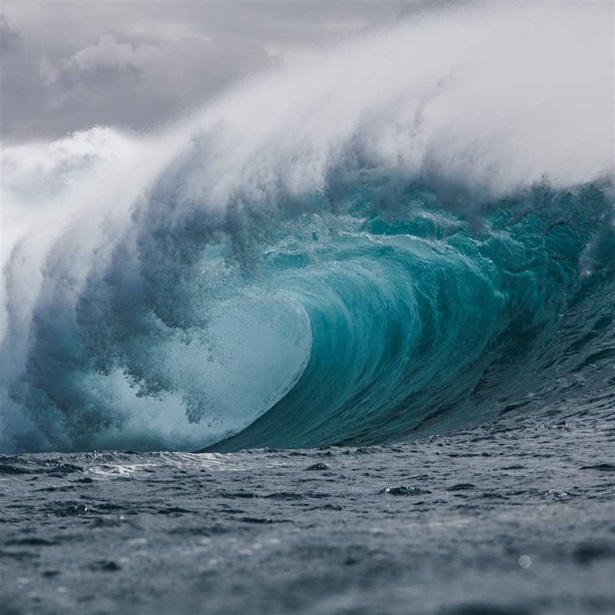New Partnership Seeks to Protect 18 Million Square Kilometers of Ocean Over Next Five Years
Blue Nature Alliance will bring broad range of stakeholders together to achieve goals

The ocean covers about 70% of Earth and provides a suite of vital services to humanity, but the Intergovernmental Science-Policy Platform on Biodiversity and Ecosystem Services reports that threats ranging from unsustainable fishing to climate change could leave more than half of marine species at risk of extinction by 2100. Building resilience of our ocean while boosting fisheries, marine-based livelihoods, and economies is possible, in part, through new and expanded marine protected areas (MPAs). The Blue Nature Alliance—a new partnership between Conservation International, The Pew Charitable Trusts, the Global Environment Facility, Minderoo Foundation, and the Rob and Melani Walton Foundation—is working to conserve 18 million square kilometers over the next five years. Shubash Lohani, a project director with Blue Nature Alliance, explains how effective marine protection can help protect the ocean and support people. This interview has been edited for clarity and length.
Q: Can you share what this new partnership is and how it will help protect the ocean?
A: The Blue Nature Alliance aims to support the conservation of 18 million square kilometers (6.9 million square miles) through the creation of new protected areas and expansion, improved management, or increased protections in existing ones. The alliance will invest in places that are significant to ocean biodiversity and people with the aim of achieving the highest level of protection possible while recognizing the rights of Indigenous peoples and working alongside local communities. In addition to MPAs, Blue Nature Alliance will also support other effective area-based conservation measures, and innovative place-based interventions designed to achieve biodiversity conservation outcomes. The alliance is currently working on large-scale efforts in Fiji’s Lau Seascape, Antarctica’s Southern Ocean and Tristan da Cunha to collectively secure protections over 4.8 million square kilometers (1.9 million square miles) of the ocean. Looking forward, we expect to soon partner on initiatives in Canada, Palau, Seychelles and the Western Indian Ocean, which aim to strengthen and enhance the protection of nearly 2 million square kilometers (734,000 square miles) of the ocean. In addition, 18 additional Blue Nature Alliance engagements have been identified across North and South America, Europe, and the Asian Pacific region.
Q: How do marine protected areas help secure a healthy ocean?
A: Studies consistently show that large, fully protected marine reserves protect biodiversity, safeguard traditional cultures closely linked to the sea, and allow plant and animal species to recover, all of which benefit areas far beyond the boundaries of the protected areas. However as of April 2021, according to the Marine Protection Atlas, a project of the Marine Conservation Institute, only 7.8% of the ocean is in some form of protection. Of that just 2.7% of the ocean is strongly protected in a no-take marine reserve or MPA with severe restrictions on extraction. To reap the full biological and economic benefits, MPAs must be well-designed and well-managed. They need robust management plans along with sufficient staffing, equipment, and funding. The International Union for Conservation of Nature recommends fully protecting at least 30% of the global ocean by 2030, and today more than 70 countries have publicly supported this goal. But it’s not just about protecting more of the ocean. We also need to protect better. This is where the Blue Nature Alliance can help drive change, by supporting the conditions needed for effective large-scale ocean conservation.
Q: How will this work engage local communities and benefit people?
A: Conservation depends on collaboration of all ocean stakeholders in establishing and managing the MPAs. It is also important to share that Indigenous peoples and local communities are among the most effective stewards of biodiversity, with landmark United Nations and peer-reviewed research documenting their contribution. The Blue Nature Alliance will work to ensure all partners are engaged in designing and implementing projects to safeguard biodiversity and protect and conserve the ocean. The economic benefits of protected areas also extend to people who provide sustainable tourism and those engaged in nearby fisheries, as studies show that MPAs also lead to higher fish populations in neighboring, unprotected areas.
Q: What is unique about Blue Nature Alliance?
A: Rapid scaling up of meaningful and effective marine protections is possible only through a shared ambition and strategic partnerships, which is why Blue Nature Alliance will bring together NGOs, governments, local communities, and the private sector to provide expertise and support to help achieve large-scale ocean conservation. The alliance’s broad definition of success includes seeing any site we work on advance in its conservation journey. Our target of conserving 18 million square kilometers is our main measure of success but will not be the only one. We want to significantly support the goal to protect at least 30% of the global ocean by 2030. To achieve this, we need a treaty to protect the high seas, action at CCAMLR to protect the Antarctic Southern Ocean, marine protections in country national waters, sustained financing to ensure effective conservation measures today and into the future, and the participation and inclusion of all ocean stakeholders. The Blue Nature Alliance aims to cultivate the enabling conditions that are necessary to reach this ambitious goal. We’ll build upon the success and lessons of current and past projects, and in some cases will invest in those sites to achieve durable conservation and social outcomes. The alliance is a natural evolution of Pew’s long-standing commitment to protect the ocean.
Q: Can you share how partners will engage in this effort?
A: Our ambitions must be as big as the ocean. They need to be global, diverse, and acknowledge that we are all part of the same ecosystem, and the only way to achieve our goals is to bring in partnerships at all levels, working with leaders from coastal communities to national and global decision-makers, like the United Nations. Blue Nature Alliance partners are local champions and leaders in the field of ocean conservation, with experience in advocacy, field implementation, communications, and long-term financing. Through our partnership approach, we’ll have the assets and expertise needed to achieve results that could not be reached by any organization alone.









